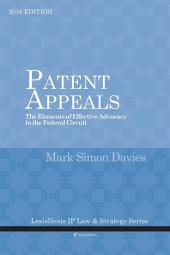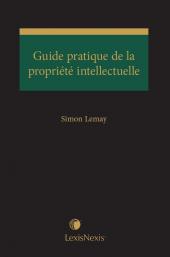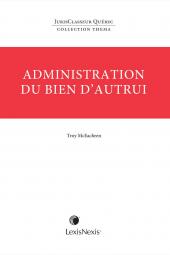Patent Appeals: The Elements of Effective Advocacy in the Federal Circuit, 2018 Edition
One Year Subscription Only Terms
Subscribers receive the product(s) listed on the Order Form and any Updates made available during the annual subscription period. Shipping and handling fees are not included in the annual price.
Subscribers are advised of the number of Updates that were made to the particular publication the prior year. The number of Updates may vary due to developments in the law and other publishing issues, but subscribers may use this as a rough estimate of future shipments. Subscribers may call Customer Support at 800-833-9844 for additional information.
Subscribers may cancel this subscription by: calling Customer Support at 800-833-9844; emailing customer.support@lexisnexis.com; or returning the invoice marked 'CANCEL'.
If subscribers cancel within 30 days after the product is ordered or received and return the product at their expense, then they will receive a full credit of the price for the annual subscription.
If subscribers cancel between 31 and 60 days after the invoice date and return the product at their expense, then they will receive a 5/6th credit of the price for the annual subscription. No credit will be given for cancellations more than 60 days after the invoice date. To receive any credit, subscriber must return all product(s) shipped during the year at their expense within the applicable cancellation period listed above.
Détails des produits
The need for a legal Elements of Style aimed at U.S. patent litigators has long been acknowledged by patent law attorneys and judges within the Federal Circuit. The United States Court of Appeals for the Federal Circuit has recently embarked on a campaign to improve the quality of briefing.
With the 2018 Edition of Patent Appeals: The Elements of Effective Advocacy in the Federal Circuit, Mark Davies has provided attorneys with an indispensable guide to briefing and arguing cases before the Federal Circuit. In the ten years since the First Edition of this book, the need for high-quality appellate briefs at the Federal Circuit has intensified. When the First Edition was published in 2008, the Supreme Court had already repeatedly faulted the Federal Circuit for inventing “formalistic” rules, using “jargon,” and failing to harmonize patent law with other areas of law. Unfortunately, more recent Supreme Court cases make precisely the same three points.
This 2018 Edition is another effort at helping parties and their representatives present patent arguments in a fashion that the appellate court will adopt and the Supreme Court accept. As before, the structure of the book is designed to match the chronological process of writing an appellate brief. After some preliminary comments on writing, the book chapters track the various sections of an opening brief required (or permitted) by the federal rules. Separate chapters address other types of briefs and filing mechanics and the final chapters address oral argument and rehearing petitions. The appendix to this book includes complete copies of the principal briefs discussed along with several other documents on proper formatting and style. The contested mixture of law and technology, of democracy and progress, is a fortunate place to spend one’s career. Law changes slowly, and much of the basic guidance for writing appeal briefs today is the same as it would have been when the patent laws were written hundreds of years ago. Technology, of course, moves quickly in comparison, and presenting relevant legal arguments requires staying current with complex factual changes. The aim with this 2018 Edition is to help all lawyers contribute to an effective presentation to the Federal Circuit, a presentation that advances the client’s interests by working within the Supreme Court’s–and thus the Federal Circuit’s–expectations of sound appellate briefing.
Table des matières
FOREWARD
ACKNOWLEDGMENTS
CHAPTER 1 Appellate Writing
CHAPTER 2 Preliminaries
CHAPTER 3 The Introduction
CHAPTER 4 The Jurisdictional Statement
CHAPTER 5 Statement of the Issues
CHAPTER 6 Statement of the Case
CHAPTER 7 Argument
CHAPTER 8 Answering Briefs
CHAPTER 9 Reply Briefs
CHAPTER 10 Filing the Brief and the Joint Appendix
CHAPTER 11 Amicus Curiae Briefs
CHAPTER 12 Oral Argument
CHAPTER 13 Panel Rehearing and Rehearing En Banc
APPENDIX A Sample Opening Brief
APPENDIX B Sample Answering Brief
APPENDIX C Sample Reply Brief
APPENDIX D Sample Amicus Brief
APPENDIX E Sample 28(j) Letters
APPENDIX F Case Cheat Sheet
APPENDIX G Sample Petition for Panel Rehearing and Rehearing En Banc
APPENDIX H Sample Petition for Rehearing En Banc
APPENDIX I Top Ten Most Common Errors in Briefs and Motions
APPENDIX J Requirements And Suggestions For Typography In Briefs And Other Papers
INDEX
 Lexis Nexis
Lexis Nexis 


